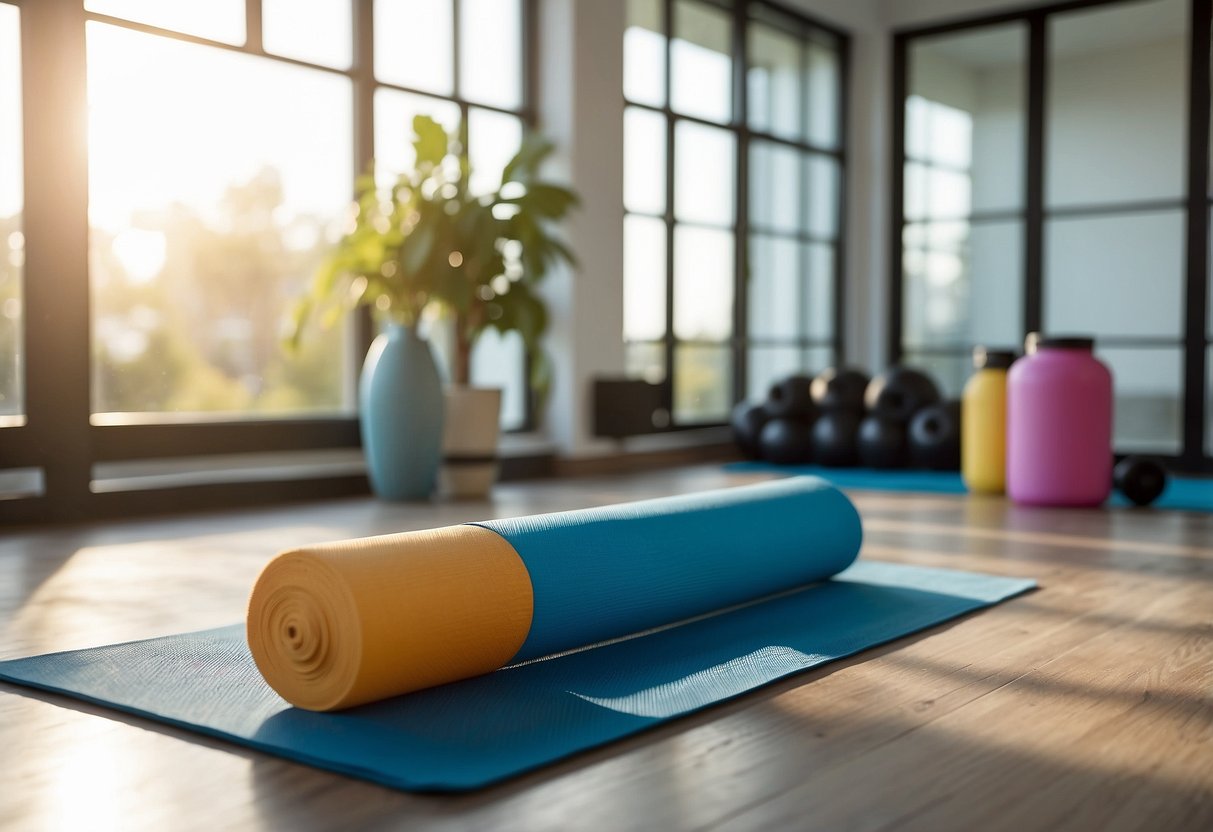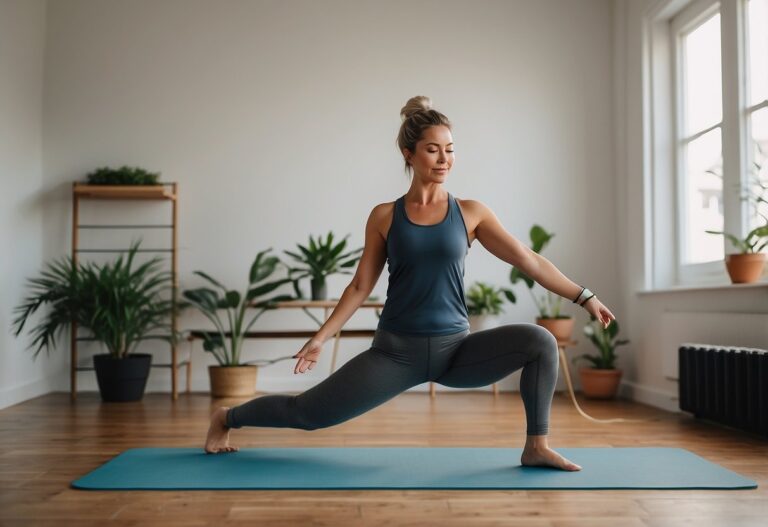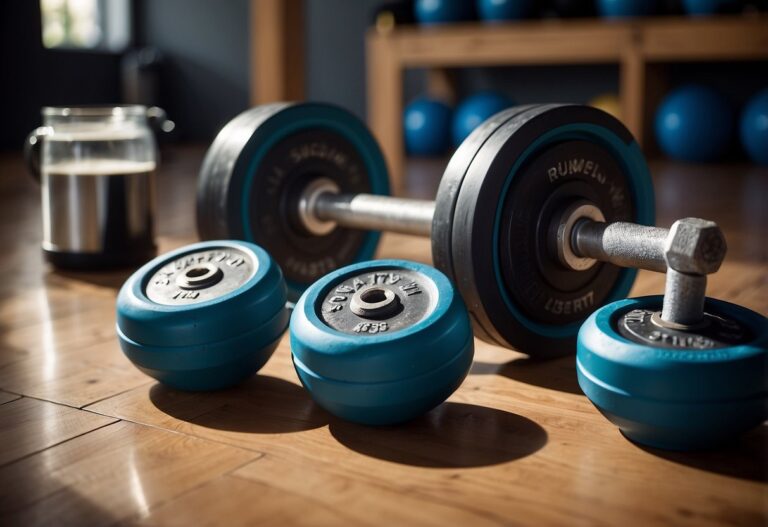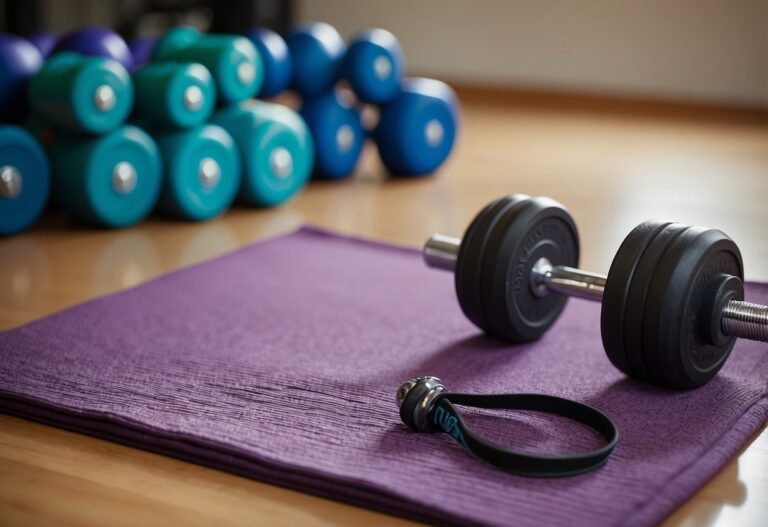Starting a new exercise routine can be a bit overwhelming, especially if you’re just beginning. The good news is that making a few simple changes can set you on the right path. Exercise doesn’t have to be complicated or time-consuming to be effective. Whether you want to boost your energy, improve your mood, or simply move more, you can start with easy workouts that fit into your day.

Sometimes, the hardest part is just getting started. You might worry about needing special equipment or lengthy time commitments. Fortunately, even small steps can make a big difference. From squeezing in a quick 5-minute workout at home to finding ways to be more active throughout the day, there are many simple ways to incorporate exercise into your life.
Start with a 5-Minute Warm-Up
Before doing any workout, it’s crucial to warm up your body. This helps you avoid injuries and gets your muscles ready. For example, you might want to try a 5-minute standing warm-up if you’re working out at home.
You don’t need a lot of space to get started. Jogging on the spot or doing some light stretching is enough. If you prefer a more guided routine, you can follow this video for a quick and effective warm-up.
A warm-up can be done anywhere, whether you’re preparing for a run or just some simple exercises at home. Making warming up a habit will keep you safe and improve your performance.
Incorporate Dynamic Stretches
Adding dynamic stretches to your routine can help get your muscles ready for a workout. These movements improve flexibility and range of motion. They are a great way to warm up your body and prepare for physical activities.
You can start with simple exercises like leg swings or arm circles. Doing these for about 5 to 10 minutes can raise your muscle temperature and enhance muscle function.
For instance, try jump lunges to engage your lower body. Another good one is the torso twist for loosening your back before exercising. These are just a few examples to get you going.
Incorporate dynamic stretches before any workout to see better results and reduce the risk of injury. Can you think of when you might try these exercises?
Use Proper Breathing Techniques
Proper breathing techniques can make a huge difference in your exercise routine. They help you stay calm and focused. This can be particularly beneficial during high-intensity workouts.
One simple method is deep breathing. Inhale deeply through your nose, letting your abdomen rise, and then exhale through your mouth. This helps oxygen flow better, boosting your performance.
Another technique is equal breathing. Breathe in for a count of four, then breathe out for the same count. This steady rhythm can help keep your stress levels down.
To try alternate nostril breathing, close one nostril and breathe in through the other. Then switch sides. It might feel strange, but many people find it very calming. This is especially good for cooling down after a hard workout.
Using these techniques consistently can help you get more out of your workouts and feel less fatigued. For more details, you can check out NHS breathing exercises for stress and 10 breathing techniques for stress relief.
Practice Yoga for Flexibility
Practising yoga is a great way to improve your flexibility. Simple poses can help stretch and lengthen muscles.
One of the most effective poses is the forward fold. Stand with your feet hip-width apart, bend at your hips, and reach for your toes.
Another helpful pose is the Eagle Arms Pose. This pose opens up your shoulders and chest, which can get tight from sitting too long.
Incorporate these poses into your routine. Start with short sessions and notice the difference in your flexibility over time.
For a beginner-friendly guide, try this 10-minute yoga routine for flexibility.
Do bodyweight exercises
Bodyweight exercises are a fantastic way to get fit without needing any special equipment. You can do them anywhere, whether you’re at home, in the park, or even on holiday.
Start with basic moves like push-ups and squats. These exercises target multiple muscle groups and help improve your strength and endurance.
Try adding exercises like lunges and planks. Lunges will work your legs and glutes, while planks are great for strengthening your core.
Mix it up to keep things interesting. You could do jumping jacks for a cardio boost, or pull-ups if you have access to a bar.
Set a goal of doing 2-3 sets of each exercise, with 10-15 repetitions per set. This will help you build a balanced workout routine.
Remember, consistency is key. Try to fit these exercises into your routine a few times a week for the best results.
Focus on Core Strength
Strengthening your core is essential for overall fitness. Your core muscles support your spine and help with stability. This makes everyday tasks easier and reduces the risk of injury.
Start with basic exercises like planks and sit-ups. Planks, for example, target several muscles at once, including your abs and back. Just hold the position for 30 seconds to start.
Yoga and Pilates are also excellent for core strength. These exercises improve balance and flexibility while activating your core. Try simple poses like the boat pose or Pilates mat moves for a challenge.
For an added challenge, you can perform exercises like the High to Low Wood Chop. This movement targets your obliques, which are the muscles on the sides of your torso. It’s an effective way to work your core from different angles.
By focusing on core exercises, you’ll build a strong foundation for all your other workouts.
Take Regular Breaks to Avoid Burnout
Taking regular breaks is a simple yet powerful way to avoid burnout.
When you work without breaks, your productivity and focus can take a hit. Short, frequent breaks can recharge your brain and keep you fresh.
It’s helpful to step away from your desk and move around. A quick walk or some stretching can do wonders.
Another effective method is the Pomodoro Technique. This involves working for 25 minutes and then taking a five-minute break. Many find this helps maintain concentration and reduce fatigue.
Integrating these short breaks can help keep stress levels down and maintain a healthier work-life balance.
Try Interval Training
Interval training is a fantastic way to add variety to your workouts. It involves short bursts of high-intensity exercises followed by low-intensity recovery periods.
For example, you could sprint for 30 seconds and then walk for a minute. Repeat this cycle a few times. This method boosts your cardiovascular health and burns more calories in less time.
Begin with simple routines like running or cycling. Warm up for about five minutes, perform your intervals, and then cool down. If running isn’t your thing, try jump rope or stair running. Both can be equally effective.
You can find more details on common interval exercises at Verywell Fit.
Mix up your routine to stay motivated

Sticking to the same workouts can get boring and make you lose motivation. To keep things fresh, try varying your exercises. Instead of running every day, mix in some cycling, swimming, or hiking.
Changing your workouts can help you stay physically and mentally engaged. It challenges different muscle groups and prevents overuse injuries.
If you always work out indoors, try an outdoor activity. Fresh air and a change of scenery can be great motivators.
Group classes can be another way to mix things up. Join a dance class, yoga session, or even a team sport. These social settings can add a fun factor to your exercise routine.
Don’t forget to adjust the intensity of your workouts. Some days, go for a high-intensity workout; on other days, opt for something more relaxed like stretching or walking.
Trying new things keeps your routine exciting. You might even discover a new favourite activity that you love.
For more ideas on keeping your workouts varied, check out these exercise tips.
Set realistic goals
Setting realistic fitness goals is key to success. Instead of aiming too high, choose goals that match your current fitness level. For instance, if you can only do five push-ups now, aim to do ten in a month.
Be flexible with your goals. As you progress, you might need to adjust them. This allows you to stay motivated and avoid frustration.
Write down your goals. Use a planner or a calendar to track your daily, weekly, and monthly steps. This way, you can see your progress and stay committed.
Benefits Of Simple Exercise Tips
Engaging in simple exercise routines offers numerous advantages for both your physical and mental well-being. You don’t need to spend hours at the gym to gain these benefits; even small, consistent efforts can make a significant difference.
Physical Health Advantages
Regular exercise can dramatically improve your health. Just 20 minutes of daily activity can reduce your risk of serious illnesses like heart disease, stroke, type 2 diabetes, and certain types of cancer. For overall health, adults should aim for at least 150 minutes of moderate-intensity activity each week, which can be as simple as brisk walking.
These exercises help you maintain a healthy weight, build stronger muscles, and increase your bone density. Activities like stretching or walking at lunchtime can boost your flexibility and reduce the risk of injuries. Plus, exercise improves your cardiovascular health, making everyday tasks easier and less tiring.
Mental Health Benefits
Simple exercise is also great for your mind. Physical activity releases endorphins, also known as “happy hormones”, which help to reduce feelings of stress and anxiety. This can enhance your mood and give you a more positive outlook on life. For those struggling with depression, consistent exercise routines can provide a natural and effective way to manage symptoms.
Additionally, regular exercise can improve sleep quality, helping you feel more rested and alert. Activities like stretching while on the phone or taking a walk outside during lunchtime can give you a break from screens and help clear your mind. This increased mental clarity can lead to better focus and productivity throughout your day.
Developing A Routine
Creating a workout routine that you can stick to is crucial for long-term success. Focus on consistency and motivation, and set realistic goals to keep yourself on track.
Consistency and Motivation
Consistency is key to any fitness routine. Start by scheduling your workouts at the same time every day. This helps your body get used to the routine and makes it a habit. Choose activities you enjoy. Whether it’s running, yoga, or lifting weights, find what you love to do. This makes sticking to the routine easier.
Stay motivated by tracking your progress. Write down your workouts and how you feel afterwards. Seeing improvements can be a great motivator. Set small rewards for meeting your fitness goals, like a new workout outfit or a relaxing spa day.
Find a workout buddy. Exercising with someone can make it more fun and hold you accountable. You can even join online fitness communities for support and encouragement.
Setting Realistic Goals
Set achievable goals to keep yourself motivated. Start with small, specific objectives, like working out three times a week for 30 minutes. As you progress, gradually increase the intensity and duration of your workouts.
Make a plan. Use a calendar or an app to schedule your workouts. Create a mix of cardio, strength training, and flexibility exercises. This can help avoid burnout and keep your routine balanced.
Be patient with yourself. It’s normal to have setbacks. If you miss a workout, don’t get discouraged. Just get back on track the next day. When setting goals, think long-term. Focus on building sustainable habits rather than seeking quick results.
Celebrate your achievements, no matter how small. These milestones will boost your confidence and keep you motivated to continue your fitness journey.







